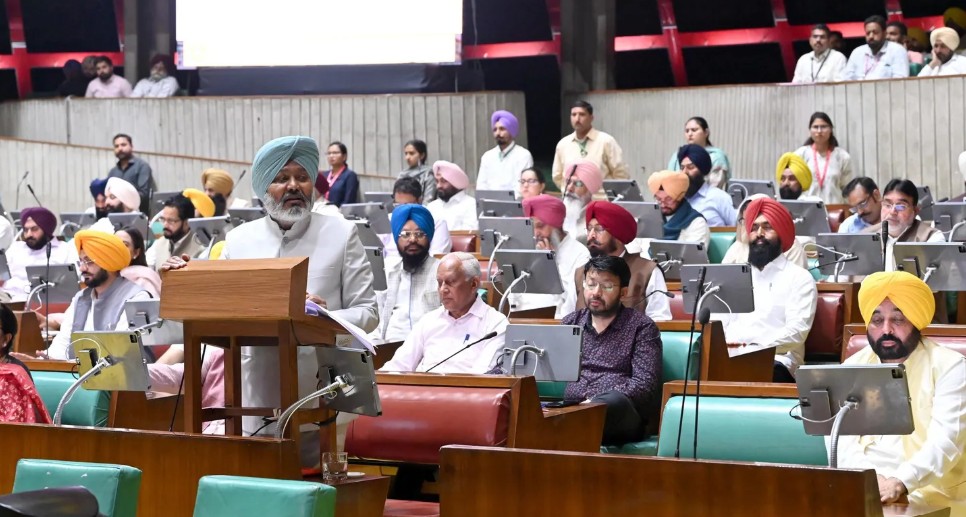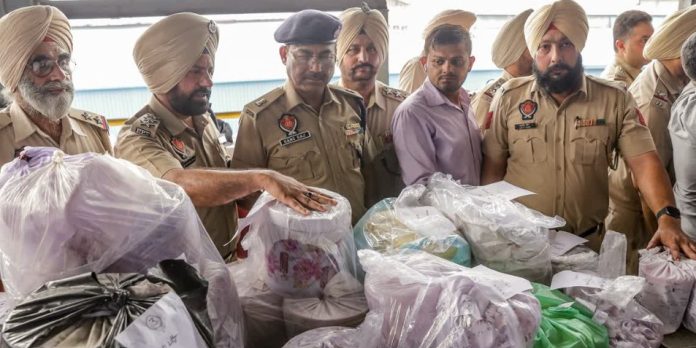Punjab is set to embark on its first-ever comprehensive census on drug addiction, marking a significant step in addressing the state’s long-standing battle against substance abuse. This initiative aims to gather accurate and detailed data on the extent of drug addiction across the state, enabling policymakers, healthcare professionals, and law enforcement agencies to formulate targeted strategies for prevention, rehabilitation, and treatment. The move has been widely welcomed by experts and social activists, who have long emphasized the need for a data-driven approach to tackling the drug crisis that has plagued Punjab for years.
The state of Punjab has been grappling with a severe drug problem for over two decades, with addiction affecting individuals across age groups, socio-economic backgrounds, and geographical regions. Despite numerous interventions, including anti-drug campaigns, strict law enforcement, and rehabilitation efforts, the issue has persisted, partly due to a lack of precise data on the number of people affected. The census is expected to fill this gap by providing a clear picture of the situation, which will be instrumental in developing effective policies and allocating resources where they are needed the most.
The initiative will involve a large-scale survey conducted across all districts of Punjab, covering urban and rural areas alike. Government officials, healthcare workers, and volunteers will work together to reach every household and community to collect data on drug addiction patterns. The census will not only focus on identifying the number of individuals struggling with substance abuse but will also examine the types of drugs being used, the age and gender distribution of addicts, socio-economic factors contributing to addiction, and the impact of drug abuse on families and communities. This holistic approach will ensure that the collected data reflects the true scope of the crisis.
One of the primary objectives of the census is to understand the root causes of drug addiction in Punjab. Experts believe that unemployment, easy availability of drugs, peer pressure, mental health issues, and lack of awareness about the dangers of substance abuse are among the key factors driving addiction. By analyzing the collected data, the government hopes to identify high-risk areas and vulnerable populations, allowing for the implementation of targeted intervention programs. Special attention will be given to youth, as studies suggest that a significant percentage of addicts are young individuals who fall into drug use due to lack of opportunities and societal pressures.
The Punjab government has emphasized that the census will be conducted in a confidential and non-judgmental manner to encourage individuals and families to participate honestly. Fear of social stigma often prevents addicts and their families from seeking help, making it difficult to get an accurate estimate of the number of people affected. To overcome this challenge, authorities plan to engage with local community leaders, religious organizations, and NGOs that have been working in the field of drug de-addiction. Their involvement is expected to build trust within communities and ensure maximum participation in the survey.

One of the biggest challenges in addressing Punjab’s drug crisis has been the lack of adequate rehabilitation facilities. While the state has several government and private de-addiction centers, the demand far exceeds the available capacity. Many addicts who wish to recover face long waiting periods for admission into rehabilitation centers, and in some cases, they are forced to seek expensive treatment at private facilities. The census will provide valuable insights into the number of people in need of rehabilitation services, enabling the government to expand existing facilities and establish new ones in areas with the highest demand.
Another critical aspect of the census will be its focus on understanding the effectiveness of existing anti-drug policies and initiatives. Over the years, the government has implemented various programs, including awareness campaigns, crackdowns on drug trafficking, and free rehabilitation services. However, the lack of reliable data has made it difficult to assess their impact. By comparing the census findings with previous estimates, authorities will be able to evaluate which strategies have been successful and which need improvement. This evidence-based approach will help in designing more efficient policies in the future.
The census will also shed light on the role of drug peddlers and supply chains in Punjab. While law enforcement agencies have made numerous arrests and seized large quantities of narcotics in recent years, drug trade networks continue to operate across the state. Understanding how drugs reach different communities and which areas are most affected by drug trafficking will enable authorities to take more effective measures to curb the supply of illicit substances. Collaboration with central agencies and neighboring states will be crucial in dismantling these networks and preventing drugs from entering Punjab in the first place.
The Punjab government has assured that it will use the findings of the census to not only combat drug addiction but also to provide long-term solutions that address the underlying socio-economic factors contributing to the crisis. Employment generation, skill development programs, and mental health support systems are expected to be an integral part of the government’s post-census strategy. By creating more job opportunities and engaging the youth in constructive activities, authorities hope to reduce the number of young people falling into the trap of addiction.
Social activists and public health experts have welcomed the initiative, stating that it is a much-needed step toward finding a lasting solution to Punjab’s drug crisis. However, they have also cautioned that conducting a census is just the first step and that its success will depend on how effectively the government acts on the collected data. Many believe that merely gathering statistics will not be enough unless concrete measures are taken to improve healthcare infrastructure, increase funding for rehabilitation centers, and implement strict regulations to control the sale and distribution of prescription drugs that are often misused.
Public cooperation will play a crucial role in the success of the census. Authorities have urged citizens to participate actively and provide honest responses to surveyors. Special efforts will be made to reach addicts who are homeless or living in vulnerable conditions, as they are often the most neglected in official statistics. NGOs and social workers will be instrumental in locating and assisting such individuals in participating in the survey.
The outcome of Punjab’s first-ever drug addiction census is expected to be a game-changer in the fight against substance abuse. With a clearer understanding of the scale and nature of the problem, the government will be in a better position to allocate resources effectively, improve rehabilitation services, and implement stronger policies to prevent drug abuse. The initiative reflects a serious commitment to tackling one of the most pressing issues in the state, and if executed properly, it could serve as a model for other regions facing similar challenges.
As Punjab prepares for this historic census, all eyes will be on how the government uses the collected data to bring about meaningful change. The people of Punjab, especially those who have lost loved ones to drug addiction, are hopeful that this initiative will lead to real solutions and a brighter future for the state. By addressing drug addiction through a data-driven, compassionate, and community-focused approach, Punjab can take a significant step toward breaking free from the cycle of substance abuse and ensuring a healthier and more secure future for its citizens.


